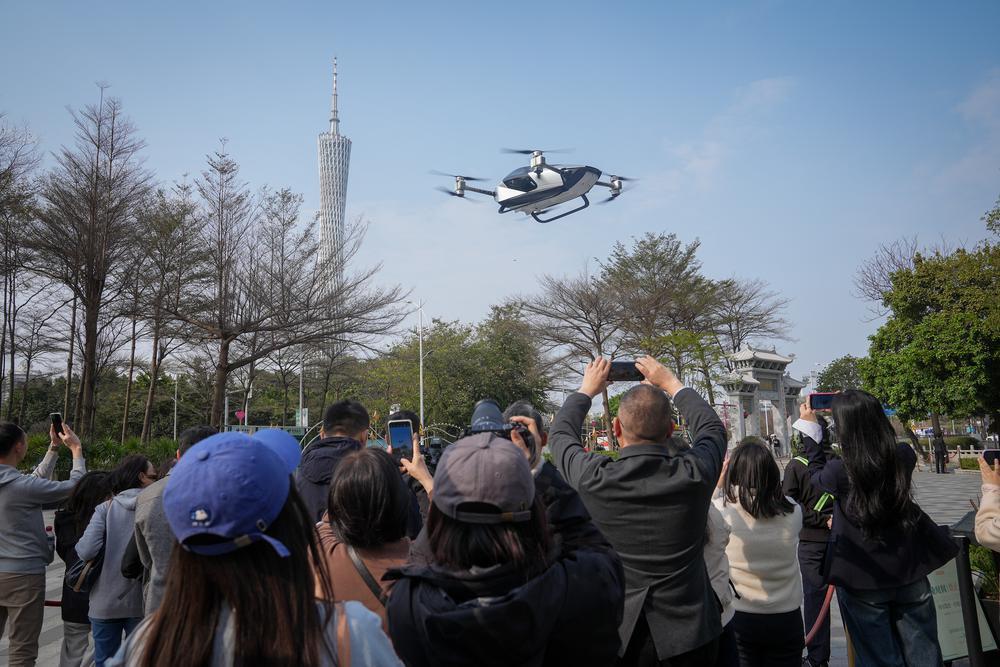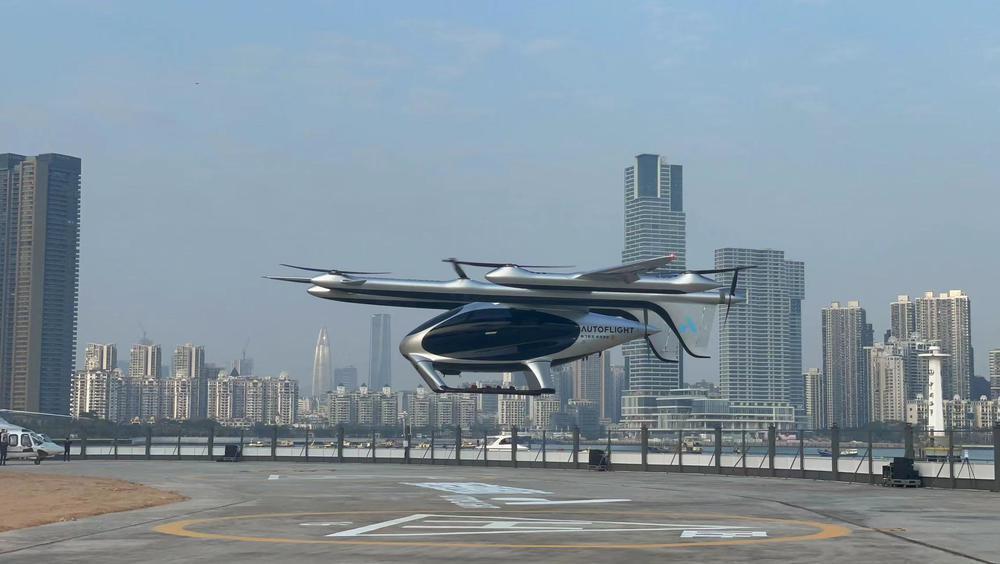
Recently, the Guangdong Provincial Investigation and Research Center, in collaboration with the Guangzhou Industrial Development Research Institute, completed the 2024 Guangdong Low-Altitude Economy Development Research Report (hereinafter referred to as "the Report"), which was released on December 20th. The Report suggests that Guangdong, with its strong manufacturing foundation and vast consumer market potential, is experiencing rapid growth in its low-altitude economy. The development of this sector is characterized by six major trends.

First, the formation of a "Three Core Linkage, Multi-Point Support, and Regional Development" model. The core of the low-altitude economy is centered around Guangzhou, Shenzhen, and Zhuhai, with surrounding cities supporting industries or developing application scenarios. Second, deep industry integration. There is a strong push for internal collaboration within the low-altitude industry chain, as well as cross-industry integration to leverage advantages and enhance the overall supporting capabilities. Third, complete industry chain. The low-altitude economy in Guangdong covers the entire value chain, from research and development to manufacturing and operation. The industry chain in Guangzhou, Shenzhen, and Zhuhai is mature, with strong leading enterprises across the upstream and downstream sectors. Fourth, technological innovation leadership.
With a focus on building systems that integrate industry, academia, research, and practical application, the provincial government is prioritizing upgrades in key technologies and the application of new energy, with significant results. Fifth, industry clustering. Guangdong has successfully cultivated numerous leading and specialized enterprises in the low-altitude sector. Guangzhou, Shenzhen, and Zhuhai together account for over 30% of the
nation's low-altitude economy companies, with several leading national rankings. Sixth, urban synergy with local features. Shenzhen has high output, has implemented relevant legislation, and serves as a pilot area. Guangzhou is focused on planning and layout, Zhuhai is building parks and platforms, while cities like Jiangmen and Enping are collaborating across regions. Additionally, the eastern, western, and northern parts of Guangdong are developing new business models tailored to local conditions.
However, the development of the low-altitude economy in Guangdong also faces challenges. To address these, the Report recommends the following measures: Improving regulations and policies; Optimizing management systems; Enhancing coordination between airspace authorities; Issuing regulations for aircraft and airspace; Clearly defining responsibilities and authorities; Building a robust supervision system; Enhancing government leadership and improve coordination between relevant departments to better meet the needs of the industry.

The Report outlines several strategies for fostering the growth of the low-altitude economy: Building an industry ecosystem; Prioritizing the development of key industries, Such as drones, and nurturing high-quality enterprises which help achieve breakthroughs in both technology and production scale; Addressing gaps and strengthening the supply chain; Utilizing existing strengths in certain sectors to create industry clusters, encouraging greater collaboration within the supply chain, and exploring new business models; Promoting general aviation clusters; Using urban cluster planning to build an emergency rescue system and attract international companies.
Creating demonstration scenarios; Increasing investments in "low-altitude + public services," such as using drones for inspections and other public service applications; Planning demonstration flight routes for low-altitude and logistics; Developing new business models in delivery and transportation services; Exploring "eVTOL + Transportation" such as piloting "air taxi" services.
Encouraging state-owned capital participation which involves special funds for technological and commercial aspects of the industry. Leveraging private capital to further accelerate the growth of low-altitude infrastructure.
Optimizing industrial layout; Promoting cross-regional collaboration and industrial alliances, and strengthening cooperation among Guangdong, hong Kong, and Macao; Promoting park construction; Attracting scientific research and enterprises to settle in the Pearl River Delta; Breaking through key technologies; Laying out testing platforms, and building "two-way enclaves" parks in other cities based on their characteristics to promote development.
Source :Lingnan on the Cloud
2024年广东低空经济调研报告:广深低空经济企业数量列全国TOP2
近期,广东省省情调查研究中心与广州产业发展研究院形成2024年广东低空经济调研报告,并于12月20日发布。报告认为,广东凭借雄厚制造业基础与广阔消费前景,低空经济发展迅猛,呈现六大特点。
一是形成“三核联动、多点支撑、成片发展”格局,广深珠为核心,周边城市配套产业或发展应用场景;二是产业深度融合,推动低空产业链内部协作,跨界融合优势产业,提升配套能力;三是产业链完备,覆盖研发、制造、运营全链条,广深珠产业链成熟,上下游链主企业强;四是技术创新领先,构建产学研用体系,省级重点布局多领域关键技术升级与新能源应用,成果显著;五是产业集聚,培育众多龙头和专精特新企业,广深珠集聚超 30%低空经济企业,多项全国第一;六是城市特色协同,如深圳产值高、立法且成试点,广州规划布局,珠海建园推平台,江门恩平跨市协作,粤东粤西粤北因地制宜发展新业态。
不过,广东低空经济发展也面临挑战。为此,《报告》建议:完善法规政策,优化管理体制,空域部门协同,出台飞行器、空域等法规,明确事权,打造监管体系,同时强化政府引导与部门配合,兼顾产业需求。
打造产业生态,优先发展无人机等产业链,培育优质企业,助力技术、规模突破;针对短板补链强链,依托优势产业打造集群,加强产业链协作,开发新业态;推动通航集群化,利用都市圈规划,构建应急救援体系,吸引国际企业。
打造示范场景,加大“低空 +公共服务”购买,拓展无人机巡检等应用;围绕“低空 +物流”规划示范航线,发展配送、运输新业态;探索“eVTOL +交通”,如“空中的士”运营试点。
鼓励国资进入,设专项基金,支持技术、商业环节,撬动社会资本,加快“低空新基建”。
优化产业布局,促进跨域协同,建产业联盟,加强粤港澳合作;推动园区建设,珠三角引科研、企业入驻,突破关键技术,布局测试平台,其他城市依特色建“双向飞地”园区促发展。
文丨记者 严锦程
图丨羊城晚报•羊城派资料图
译丨林佳岱
审丨邹晓华
-
'A pearl on the palm' inspires great encouragement for Macao
2024-12-20 22:35:06 -
The Wanzai boundary checkpoint supports the interconnected development of Zhuhai and Macao in the GBA
2024-12-20 22:36:55 -
GBA's newest megaproject takes a leap forward
2024-12-20 22:36:56 -
'A pearl on the palm' reflects the President Xi's deep hopes for Macao, says the cultural figure Liu Changmei from Macao
2024-12-19 22:30:29






